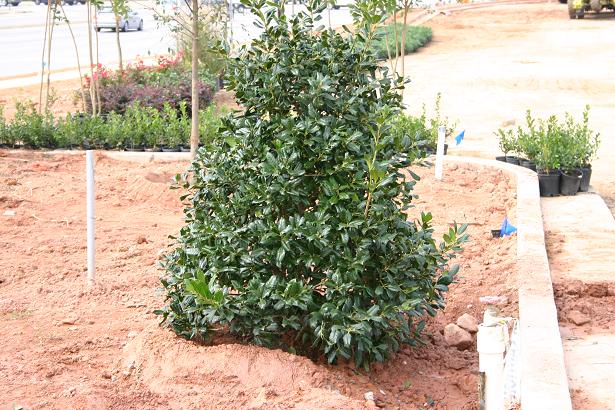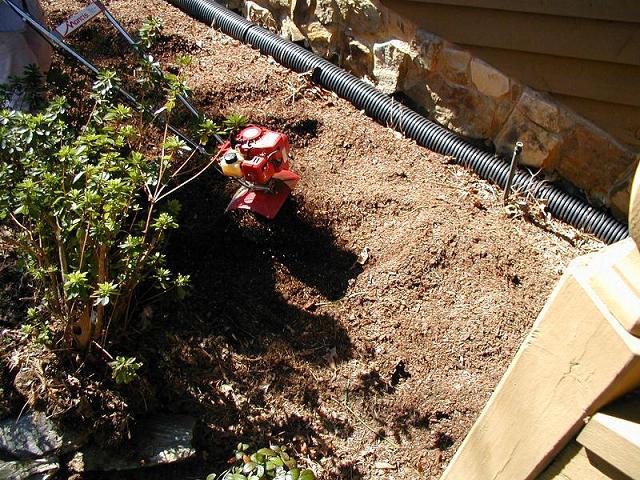Georgia Gardener Newsletter Design Tip: July 13, 2006
Soil Amending
How many times have you seen this?

The entrance to a new residential or commercial
development is being landscaped. The orange-red dirt has been graded perfectly
flat and compacted, the landscape crew is using a power auger to drill holes for the shrubs and
is laying squares of sod right on top.
I watched the landscape above several months afterwards and have seen dead shrubs replaced more than once.
Somehow, the message didn't get through that the plants really
don't like being entombed in this clay soil, which has hardened to clay pot strength.
The clay soil pictured above is the subsoil that was left after the topsoil was scraped off
during the grading process. Although clay soil is rich in nutrients, the soil particles are
so tightly bound together that the nutrients are locked up tight and unavailable. Roots have
a difficult time penetrating into the surrounding area. Red clay also takes a long time to absorb
moisture and once wet, takes forever and a day to dry out. Factor in low oxygen levels in the
soil and you have a complete recipe for plant death. When faced with this problem,
the best thing a home or business owner can do is insist that the soil be amended.
Compacted soil such as this needs to be amended with a mixture of top soil and
organic material. For my landscape, I use the following mixture:
40 pounds of inexpensive top soil +
40 pounds of soil conditioner (ie. Nature's Helper) +
40 pounds of either Black Kow or Mushroom Compost.
I mix this together in a wheelbarrow. I then take a shovel and break up the existing
clay soil before adding a three inch layer of the mixed amendments over the entire area to be planted,
not just each individual planting hole. At this point, you can plant or rototill
the entire area further mixing the amendments into the existing soil to a depth of 8 inches.

When installing plants, remember to dig a hole that is 2-3 times the diameter of the root ball
and it's usually best to plant a bit high. Once the plants are installed, don't forget
to
mulch
the entire area.
Plants that are installed in well-amended soil:
*Take less time to become established
*Experience less stress and are better able to resist pests and diseases
*Are better able to withstand drought
*Have overall less mortality thus saving you money
Click
here
for more information.
Copyright © 2007 by Theresa Schrum - All rights reserved
No part of this website may be reproduced without the expressed written permission of Theresa Schrum


